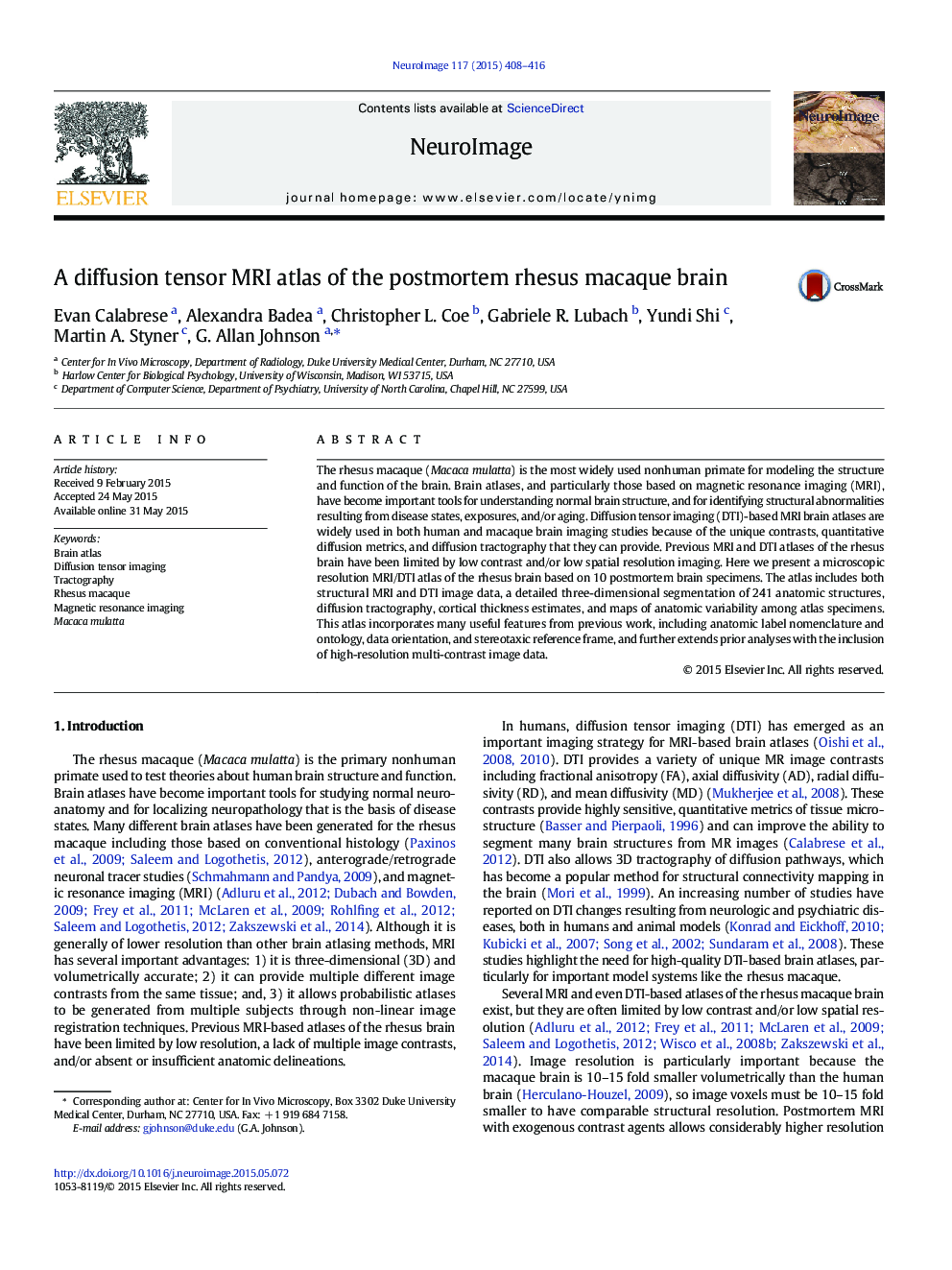| Article ID | Journal | Published Year | Pages | File Type |
|---|---|---|---|---|
| 6025064 | NeuroImage | 2015 | 9 Pages |
â¢We present a high-resolution DTI/MRI atlas of 10 postmortem rhesus macaque brains.â¢The atlas includes 3D segmentations of 241 brain regions, and 42 tracts.â¢We analyze morphometric variation and cortical thickness across the atlas group.
The rhesus macaque (Macaca mulatta) is the most widely used nonhuman primate for modeling the structure and function of the brain. Brain atlases, and particularly those based on magnetic resonance imaging (MRI), have become important tools for understanding normal brain structure, and for identifying structural abnormalities resulting from disease states, exposures, and/or aging. Diffusion tensor imaging (DTI)-based MRI brain atlases are widely used in both human and macaque brain imaging studies because of the unique contrasts, quantitative diffusion metrics, and diffusion tractography that they can provide. Previous MRI and DTI atlases of the rhesus brain have been limited by low contrast and/or low spatial resolution imaging. Here we present a microscopic resolution MRI/DTI atlas of the rhesus brain based on 10 postmortem brain specimens. The atlas includes both structural MRI and DTI image data, a detailed three-dimensional segmentation of 241 anatomic structures, diffusion tractography, cortical thickness estimates, and maps of anatomic variability among atlas specimens. This atlas incorporates many useful features from previous work, including anatomic label nomenclature and ontology, data orientation, and stereotaxic reference frame, and further extends prior analyses with the inclusion of high-resolution multi-contrast image data.
Graphical abstractDownload high-res image (247KB)Download full-size image
